INTERDIMENSIONAL LANDSCAPES
BY LIZ NIELSEN
"I can make a negative out of anything; light either moves through it or around it. It's a matter of planning the end result and finding a way there."

Unseen Platform: What first drew you to photography?
Liz Nielsen: I've been a painter, and worked with film, video, and sculpture as well. I was drawn to photography as a way of capturing cognitive sight. The awareness that what I see in the world differs from what another sees in the exact same space fascinates me.
I'm also interested in time and how it's captured in a photograph… in a way, I began photographing things to record life because the memory can fade or change as time progresses.
What inspired you to make your own negatives?
I began making my own negatives because I'm always trying to push the boundaries of photography. The effect I wanted just wasn't possible with a camera. Besides, the earliest photographs were lensless; they were photograms!
I love working this way, directly on the paper with light, at a time when photography has shifted so far into the digital realm. I can make a negative out of anything; light either moves through it or around it. It's a matter of planning the end result and finding a way there. Recently, I've been using negatives shot on film too.
And how do you keep working when you're not inspired?
When I'm not inspired, I clean my studio. For some reason, moving things around helps me get going… but really most of my inspiration comes from walking, reading, or having conversations. The time in the studio is more about production.
Tell us a bit about Interdimensional Landscapes. How does this new series build on (and differ from) your previous work?
Interdimensional Landscapes builds directly upon images from my previous series, Entanglement. The significant difference with these new works is that some of the layers were created with a camera and enlarger. There's something grounding in this series, yet I believe the photographs/photograms still remain locationless, and outside of time.
Landscape is a constant theme within my work. It started with my fascination with traditional Japanese landscape paintings. Looking at images where the sky and ground are given equal weight, I become focused on the line in between. Is it part of the sky or the land? Or is it both sky and land and also a third thing. It feels like this horizon line is a quantum line; when you focus on it, you see everything at once.
Your use of more figurative photographic elements in compositions such as Oasis Diptych and Castle Dyptich is really intriguing. What inspired this move?
This is another experiment, another way of layering and playing with suggested meaning. I photograph nonstop, and yes, with a camera, and about half the time with film. The layers of these photograms that include fragments of camera-made photographs, are from a trip I took with my family to Yellowstone park. There were four of us then and now we're three… so I've held onto the negatives for five years now. The pain of loss sits within all things when you're grieving. I returned to the negatives recently, with a new heart, and felt ready to present them as abstracted parts rather than as they were originally shot. The absence of Elijah is present in all of them. Although he was there when the photographs were taken, he was always just outside the frame.
How do you go about naming your pieces?
When you make art, you swirl it around in your thoughts for days, weeks, and months on end. You draw about it, write about it, and read about things connected to it. So, after you arrive at a finished artwork, it has its own energy, its own vibe, and instead of boxing it in, I usually look at it and say "who/what are you?". Then I listen.
Text by Ish Doney, Unseen Platform
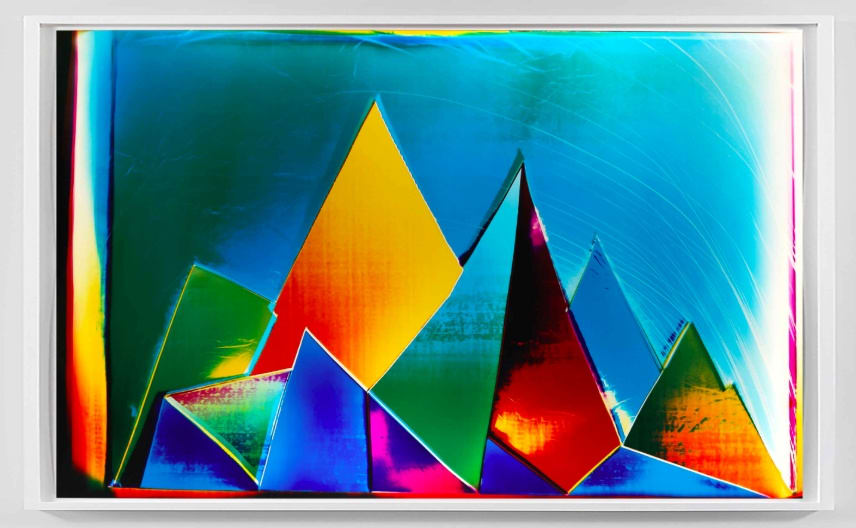
Underwater Mountains, 2018
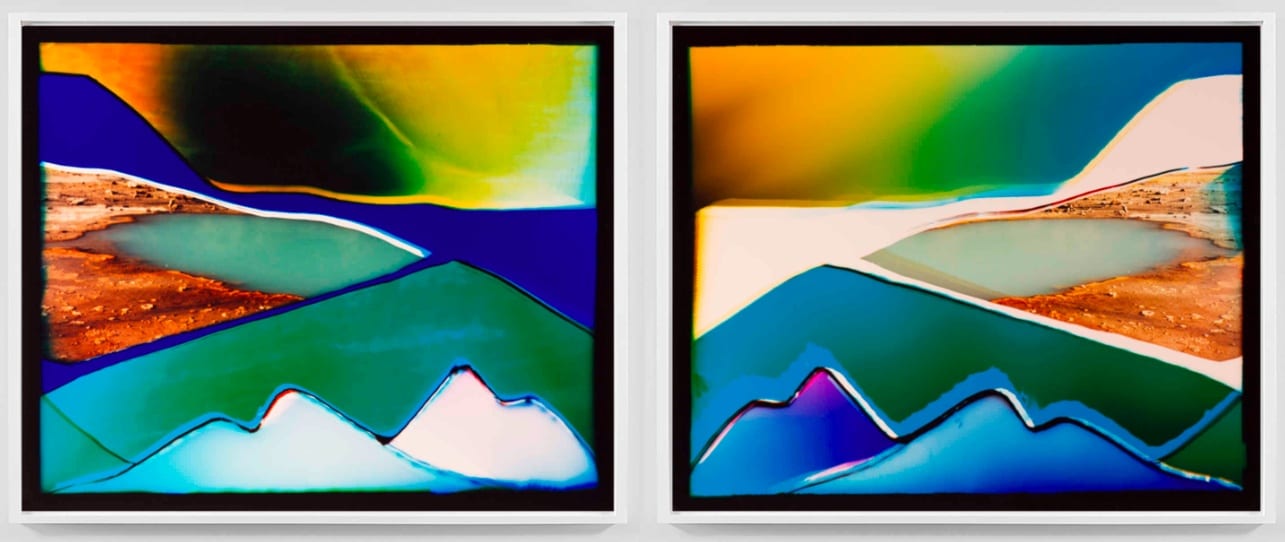 Oasis II & Oasis I, 2019
Oasis II & Oasis I, 2019
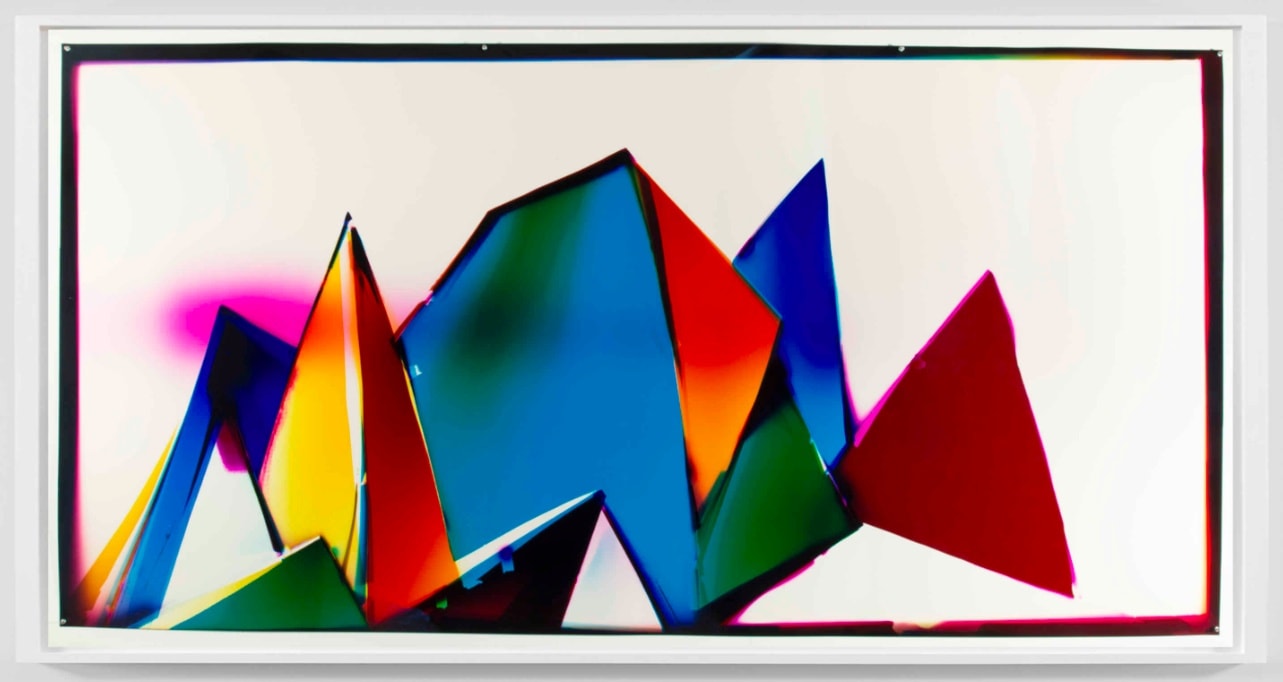
Mountain Jewels, 2018
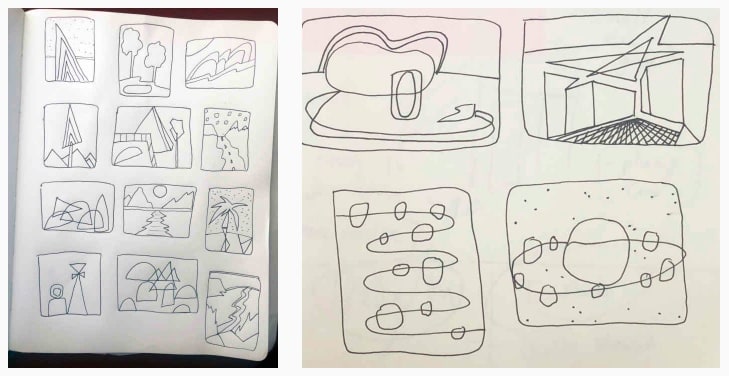
Sketchbook detail, Liz Nielsen
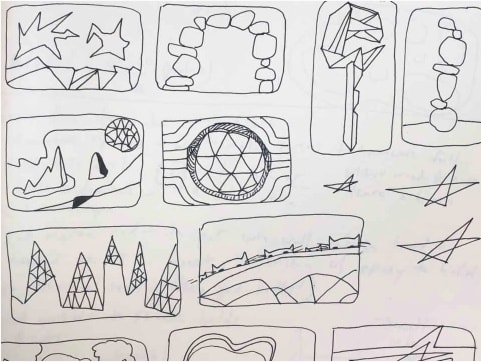
Sketchbook detail, Liz Nielsen
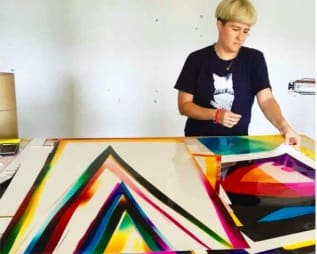
Liz Nielsen
New York, US
For Liz Nielsen (b.1975, USA), the darkroom is both a deeply contemplative space and an important physical site of production. Whilst the artist has explored a multitude of more conventional methods, she has slowly gravitated towards various cameraless processes, placing paramount importance on the enticing effects of light and its fluctuating results. Abstraction is at the core of Nielsen's work. By creating her own unique negatives from found objects, she constructs distinctly idiosyncratic and colourful representations of light that engage our imagination.


